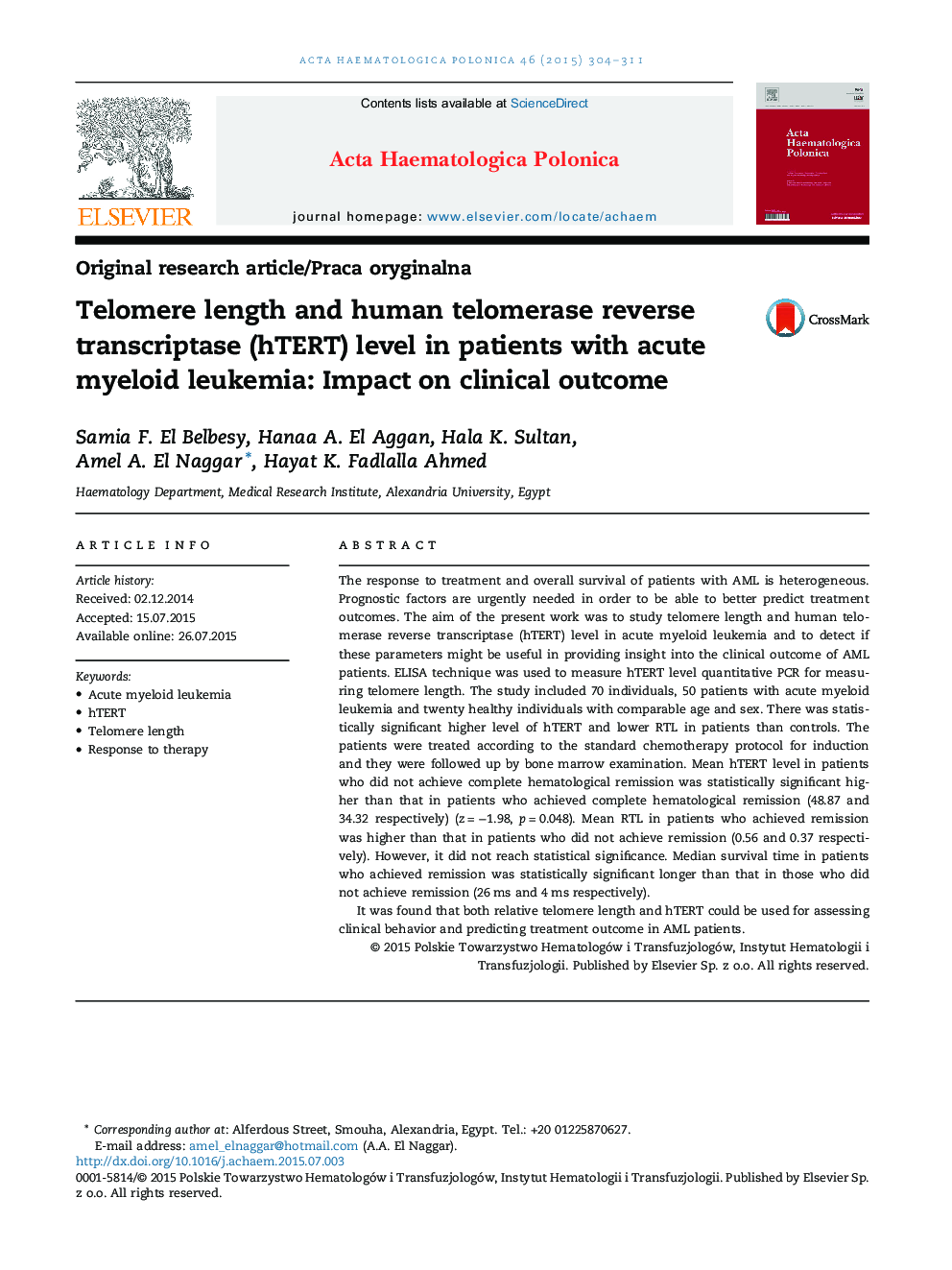| Article ID | Journal | Published Year | Pages | File Type |
|---|---|---|---|---|
| 3328090 | Acta Haematologica Polonica | 2015 | 8 Pages |
The response to treatment and overall survival of patients with AML is heterogeneous. Prognostic factors are urgently needed in order to be able to better predict treatment outcomes. The aim of the present work was to study telomere length and human telomerase reverse transcriptase (hTERT) level in acute myeloid leukemia and to detect if these parameters might be useful in providing insight into the clinical outcome of AML patients. ELISA technique was used to measure hTERT level quantitative PCR for measuring telomere length. The study included 70 individuals, 50 patients with acute myeloid leukemia and twenty healthy individuals with comparable age and sex. There was statistically significant higher level of hTERT and lower RTL in patients than controls. The patients were treated according to the standard chemotherapy protocol for induction and they were followed up by bone marrow examination. Mean hTERT level in patients who did not achieve complete hematological remission was statistically significant higher than that in patients who achieved complete hematological remission (48.87 and 34.32 respectively) (z = −1.98, p = 0.048). Mean RTL in patients who achieved remission was higher than that in patients who did not achieve remission (0.56 and 0.37 respectively). However, it did not reach statistical significance. Median survival time in patients who achieved remission was statistically significant longer than that in those who did not achieve remission (26 ms and 4 ms respectively).It was found that both relative telomere length and hTERT could be used for assessing clinical behavior and predicting treatment outcome in AML patients.
